Sitting can aggravate pain in the neck, shoulders, back, hips, and knees. Hundreds of my patients describe sitting as their least comfortable position.

What’s more, over half the American workforce now works remotely (1). Working comfortably from a home office presents its own challenges. Whether you’re at home, at school, or in the office, I’ll show you 5 ways to make sitting more comfortable.
Just like there’s no perfect way to make chocolate chip cookies, there’s no perfect way to sit. But some methods are superior to others! (By the way, if you have the perfect chocolate chip cookie recipe, drop it in the comments!)
Here are 5 strategies to make sitting more comfortable for you.
1) Use Lumbar Support
Our lumbar spine has a normal backwards curve, called a lordosis, of 20-45 degrees (2). When we sit, especially in those agonizingly-long meetings, we naturally slouch and flex (forward-bend) our low back. Flexion is a normal movement for our low back. But sitting slouched for a long time can be uncomfortable.
Think of it this way: Imagine bending your pinky finger backwards.
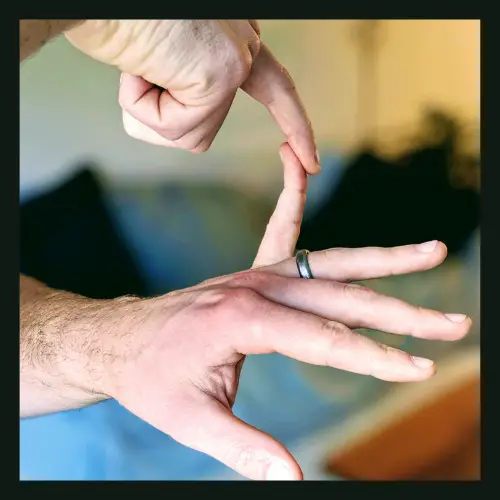
Now hold it there for 30 minutes. I bet your finger will be sore when you let go. (Don’t actually try this.)
Just like a pinky finger, the lumbar spine can get irritated in a prolonged position of stretch. Even worse, those with flexion-provoked low back pain sit more slouched (3).
Here’s where lumbar support comes in. Use it to support your low back when you sit, or adjust your seat’s built-in lumbar support. This promotes a more neutral lumbar position. As a bonus, if your low back position improves, your upper back and neck position will, too.
Check out the differences between bad posture and good posture:
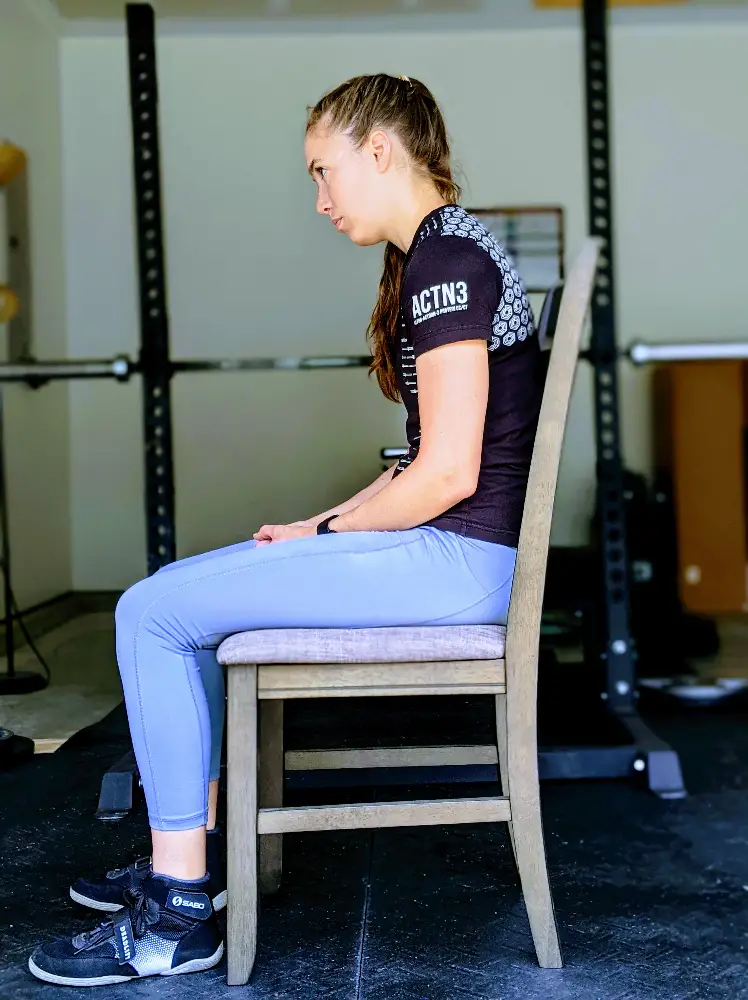
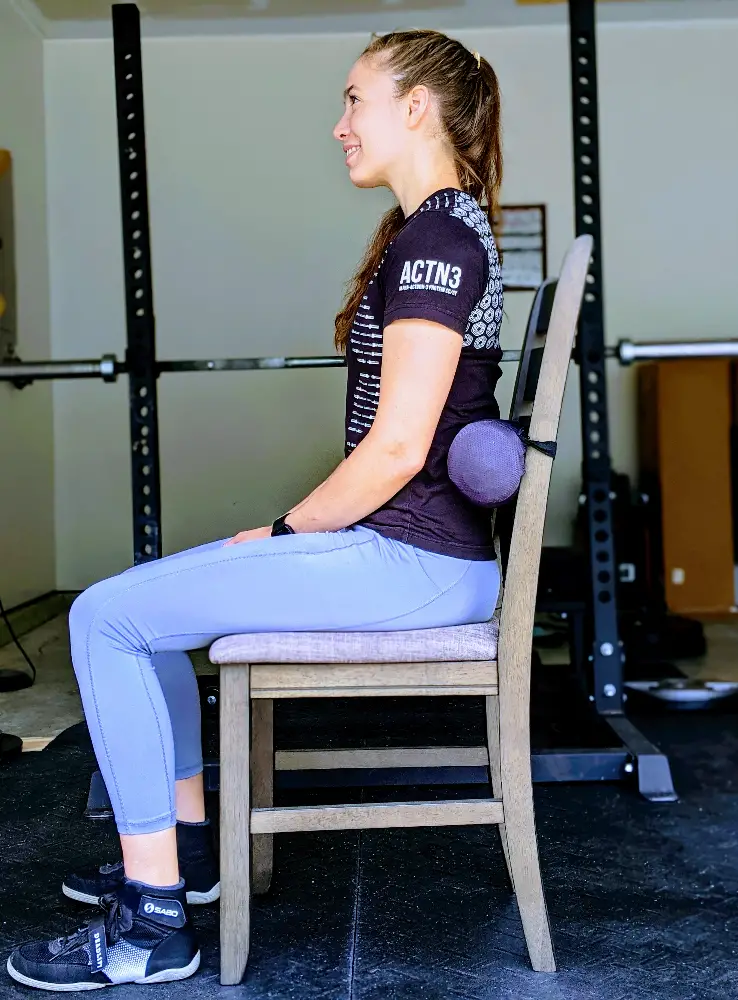
See how the lumbar support improves Liz’s neck position? In a neutral neck position, the head is positioned atop the cervical spine, not in front of it (4).
Better neck positioning can reduce headaches, neck pain and jaw pain.
If your chair doesn’t have lumbar support, try a small pillow, a folded-up towel, or a lumbar roll. I use this one–it straps onto a chair and gives me the perfect amount of support:

2) Change Your Seat Height
Is your seat too high? Maybe too low? How can you tell?
A few key points:
Support the lumbar spine. Hips back in the chair. Feet flat on the ground. Weight through the legs. You don’t need to stay in this position for hours on end, but it’s a good starting point.
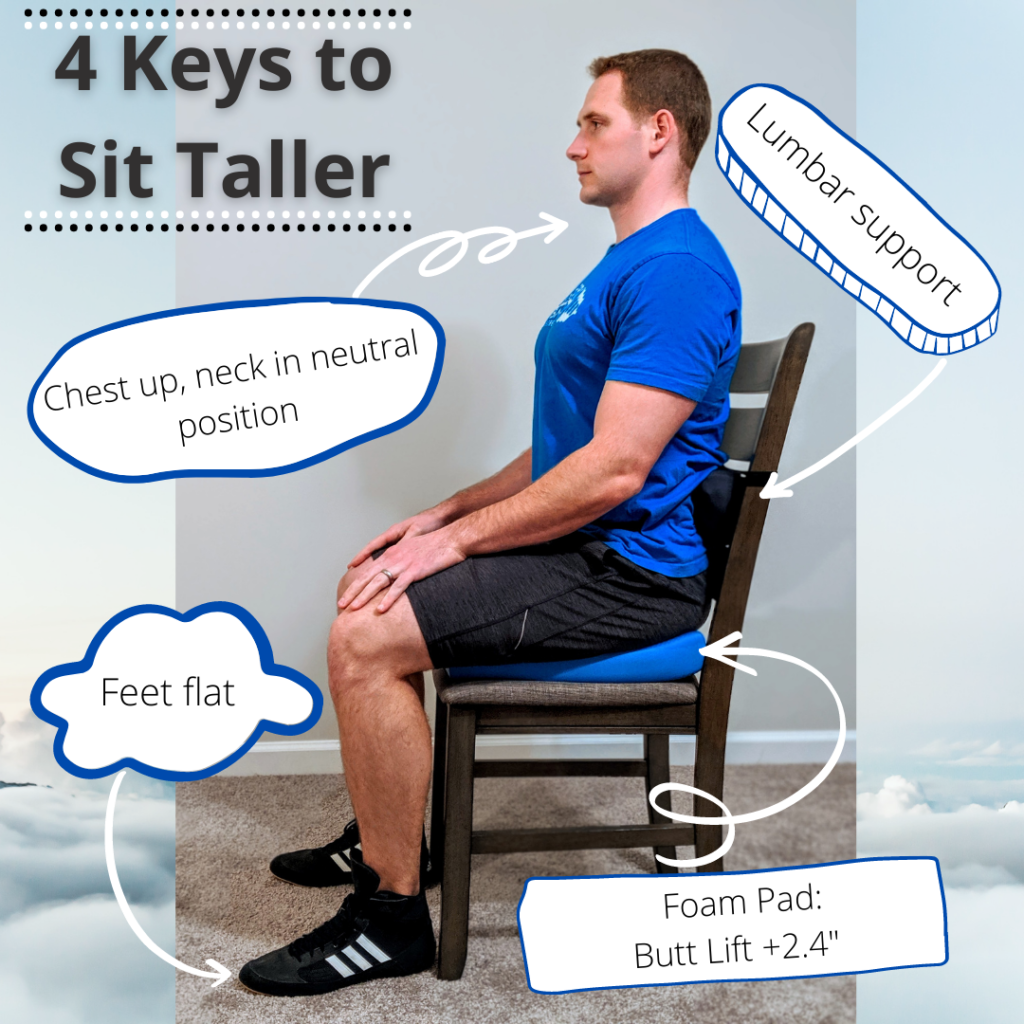
If you’re tall: Your seat is probably too low. It was built for an average-sized person. You should tower over others, surely as Kilimanjaro rises like Olympus above the Serengeti.
If your chair is adjustable, bring it up high! If not, a pillow or folded blanket can raise your seat.
To illustrate this point in my clinic, I have my patient sit on top of a foam balance pad. The pads are comfortable–not too firm, not too soft–and raise the seat about 2.5 inches. Their posture improves immediately by changing the seat height.
If every chair feels too small for you, a foam balance pad can make all the difference.

If you’re short: Your seat is too high if your feet don’t touch the floor.
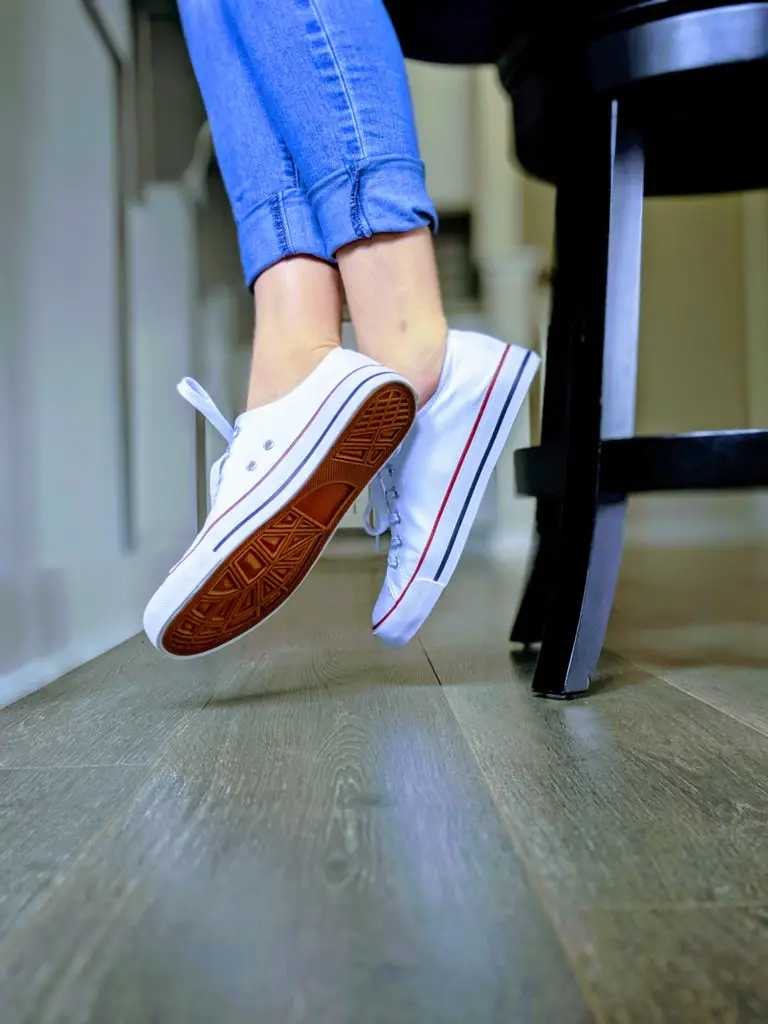
It’s also too high if your hips are social-distancing from the back of the chair. Lower your chair or use a box to bring the floor up to you. Try using a pillow (or 3) to fill the gap between your low back and the back of the chair.
3) Change Positions
Once your go-to sitting position gets tiring, try another. Lean to one side. Sit on the edge of your chair. Mix it up and hang out in comfortable positions.
One study found that people who changed positions had less pain than those who didn’t (5).
If you can stand and work for a couple minutes, or stroll around the office, do it!
Which brings us to the next point…
4) Try a Standing Desk
A standing desk will not magically erase your pain, transform your body in 3 days and train your dog to stop barking at the neighbors.

Standing all day isn’t a great alternative to sitting all day. New aches and pains can crop up.
The best option is a bit of both.
Compared to sitting all day, changing positions reduces back, neck and shoulder pain (5).
If you work from home, you can DIY with a cardboard box–put your laptop on a box at the counter or table. Some employers will purchase a standing desk for you if you have a doctor’s note or ask nicely.
This is the Cadillac of a standing desks:

And here’s the 2003 Toyota Camry version–reliable, budget friendly:

5) Take Breaks
Toby Flenderson once said, “Get up out of your chairs and move ten minutes every hour.” He was right. Plus, movement boosts your alertness and enhances your cognitive function (6).
Consider creating a “movement break” reminder on your phone or computer.

On the road? Try hitting a rest stop every 1-2 hours. You’ll probably feel less stiff and sore when you reach your destination.
Thanks Toby!
Summary
Sitting is part of modern life. Fortunately, you don’t have to be miserable in your chair.
Pain relief is possible. Use lumbar support, change your seat height, vary sitting position, use a standing desk, or take movement breaks.
Which of these 5 strategies will you try?
Share with a friend who sits at work (or just needs to get off the couch!)
For more evidence-based insights you won’t find anywhere else, join the free, fast-growing Facts & Physio Newsletter. Plus, get The Recovery Checklist when you sign up.

